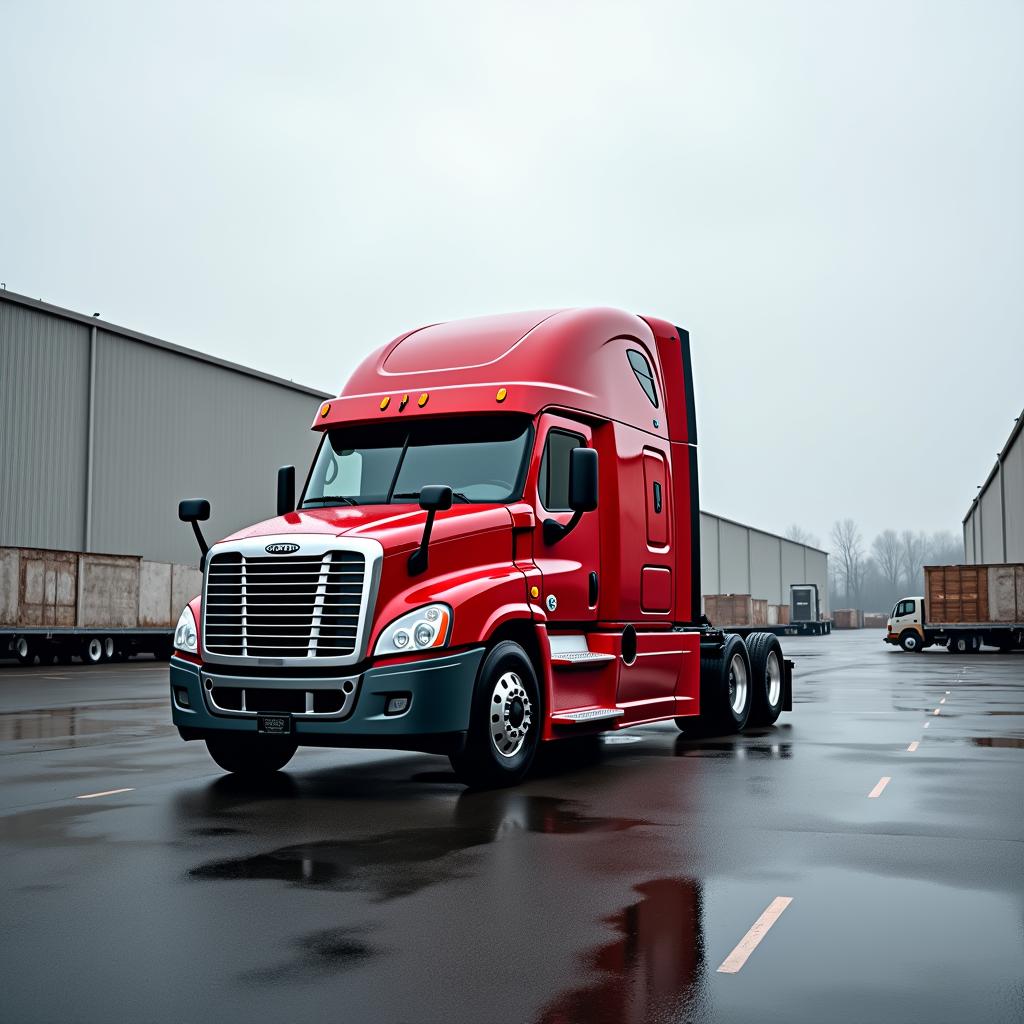In today’s eco-conscious business landscape, trucking companies face increasing pressure to reduce their carbon footprint while maintaining profitability. Fortunately, numerous green trucking grants and incentive programs exist to help fleet operators make the transition to more sustainable operations. Whether you’re looking to upgrade to electric vehicles, implement fuel-saving technologies, or adopt alternative fuels, financial assistance can make these investments significantly more affordable.
For fleet managers and trucking company owners, navigating the complex world of environmental grants can be overwhelming. Which programs offer the best return on investment? How do you qualify? What deadlines should you be aware of? This comprehensive guide will walk you through the most valuable green trucking grants available today, providing you with the information you need to secure funding for your fleet’s sustainability initiatives.
Federal Green Trucking Grants and Incentives
The federal government offers some of the most substantial financial support for green trucking initiatives through various agencies and programs. These opportunities can significantly offset the costs of transitioning to more environmentally friendly fleet operations.
EPA Clean Diesel Funding Assistance Program
The Environmental Protection Agency’s Clean Diesel Funding Assistance Program remains one of the cornerstones of federal support for sustainable trucking. Part of the Diesel Emissions Reduction Act (DERA), this program awards competitive grants to fleet operators looking to reduce diesel emissions through vehicle replacements, engine upgrades, or retrofit technologies.
Key features of this program include:
- Funding for up to 45% of the cost of replacing diesel vehicles with alternative fuel vehicles
- Up to 60% funding for engine replacements with cleaner alternatives
- Up to 100% coverage for certain idle reduction technologies
According to the EPA’s DERA program website, these grants have helped fund thousands of clean diesel projects, significantly reducing emissions nationwide while helping businesses maintain their competitive edge. Applications typically open annually, with deadlines falling in the first quarter of the calendar year.
Department of Energy’s SuperTruck Program
For trucking companies invested in cutting-edge technology, the Department of Energy’s SuperTruck program offers substantial support for innovation in freight efficiency. Now in its third iteration (SuperTruck 3), this program focuses on developing zero-emission medium- and heavy-duty trucks.
While primarily aimed at manufacturers and technology developers, fleet operators can benefit through partnerships that allow early adoption of these advanced technologies at reduced costs. The program has already demonstrated remarkable achievements, with participants achieving more than 100% improvement in freight efficiency compared to 2009 baselines.
Alternative Fuel Tax Credits and Incentives
Though not traditional grants, federal tax incentives provide significant financial benefits for companies investing in alternative fuel infrastructure and vehicles. These include:
- Alternative Fuel Infrastructure Tax Credit – Covering up to 30% of the cost (max $30,000) for installing alternative fueling equipment
- Commercial Electric Vehicle Tax Credit – Providing up to $40,000 for qualified commercial clean vehicles
- Biodiesel and Renewable Diesel Blender’s Tax Credit – Offering $1.00 per gallon for biodiesel blending
These incentives can dramatically improve the ROI on green fleet investments, making the transition to sustainable operations much more financially viable.
State-Specific Green Fleet Funding Opportunities
While federal programs offer substantial support, state-level green trucking grants often provide more accessible funding with less competition. These programs vary widely by location but can be extremely generous in states with aggressive emissions reduction goals.
California’s HVIP and Other Programs
California leads the nation in supporting green trucking initiatives through numerous funding programs. The Hybrid and Zero-Emission Truck and Bus Voucher Incentive Project (HVIP) stands out by offering point-of-sale vouchers that directly reduce the purchase price of eligible vehicles.
Key benefits include:
- Vouchers ranging from $20,000 to $315,000 for zero-emission trucks, depending on vehicle class and specifications
- Additional funding for vehicles operating in disadvantaged communities
- No scrappage requirements for existing vehicles
California also offers the Carl Moyer Memorial Air Quality Standards Attainment Program, providing grants for cleaner-than-required engines and equipment, and the Low Carbon Fuel Standard (LCFS), which creates marketable credits for low-carbon fuel usage.
New York’s Truck Voucher Incentive Program
New York State’s Truck Voucher Incentive Program (NYTVIP) offers vouchers to reduce the cost of alternative fuel and electric trucks and buses. The program provides:
- Up to $185,000 for Class 8 battery-electric vehicles
- Up to $120,000 for Class 6-7 battery-electric vehicles
- Funding for compressed natural gas and hybrid electric vehicles
This program specifically targets fleets operating in areas with poor air quality, helping businesses improve their environmental impact while benefiting communities most affected by transportation emissions.
Texas Emissions Reduction Plan (TERP)
The Texas Emissions Reduction Plan encompasses several grant programs designed to improve air quality by reducing emissions from vehicles and equipment. For trucking companies, the most relevant opportunities include:
- Texas Clean Fleet Program – Supporting the replacement of diesel vehicles with alternative fuel or hybrid vehicles
- Texas Natural Gas Vehicle Grant Program – Offering funds for replacing diesel vehicles with those powered by natural gas or propane
- Emissions Reduction Incentive Grants – Providing financial incentives for upgrading or replacing older equipment
TERP grants can cover up to 80% of the incremental cost difference between standard diesel vehicles and cleaner alternatives, making them some of the most generous state-level funding for sustainable trucking operations.
Private Sector and Utility Company Green Fleet Incentives
Beyond government programs, private sector organizations and utility companies offer additional resources for fleet greening initiatives. These programs often complement public funding, allowing trucking companies to stack multiple incentives.
Utility Company Rebates and Infrastructure Support
Many electric utilities offer substantial incentives to support electric vehicle adoption and charging infrastructure development. These can include:
- Rebates for commercial EV charger installation
- Special commercial EV charging rates to reduce operating costs
- Technical assistance for fleet electrification planning
- Make-ready infrastructure programs that cover the costs of preparing sites for EV charging stations
For example, Southern California Edison’s Charge Ready Transport program provides infrastructure support for medium- and heavy-duty electric vehicles, covering up to 100% of the costs for make-ready infrastructure to support EV charging stations. Similarly, Pacific Gas & Electric offers the EV Fleet program with incentives for charging infrastructure and technical assistance.
Manufacturer Incentives and Programs
Vehicle and equipment manufacturers often offer their own incentives to encourage adoption of new green technologies. These can include:
- Special financing terms for green vehicles
- Extended warranties on alternative fuel systems
- Reduced-cost maintenance programs for electric trucks
- Partnership opportunities for early adoption and testing of new technologies
These manufacturer programs can significantly enhance the value proposition of investing in cleaner fleet vehicles, especially when combined with government incentives.
Volkswagen Environmental Mitigation Trust Funds
The Volkswagen Environmental Mitigation Trust represents a unique funding source created as part of the settlement following Volkswagen’s diesel emissions violations. With approximately $2.9 billion allocated across states, this program continues to provide substantial support for green trucking grants and emission reduction projects.
State-Administered VW Settlement Funds
Each state administers its portion of the VW settlement funds according to its own priorities and guidelines. Common funding opportunities include:
- Truck replacement programs providing up to 75% of the cost for new electric vehicles
- Engine repower funding covering 40-60% of costs
- Idle reduction technology grants
- Alternative fuel infrastructure development
The Volkswagen Settlement Clearinghouse provides information about how each state is administering these funds. While some states have already exhausted their allocations, many still have active programs with significant funding available.
Eligibility Requirements and Application Tips
VW settlement funding typically prioritizes projects that will achieve the greatest emissions reductions per dollar spent. To maximize your chances of securing these funds:
- Target high-use vehicles – Trucks with higher annual mileage or operating hours will demonstrate greater emissions reduction potential
- Focus on environmentally sensitive areas – Projects in areas with air quality challenges often receive priority
- Offer matching funds – Being willing to cover a higher percentage of project costs can improve your application’s competitiveness
- Document baseline emissions – Clearly demonstrate your current fleet emissions to establish the potential for improvement
These funds represent one of the most flexible sources of financing for eco-friendly trucking upgrades, covering a wide range of technologies and approaches to emissions reduction.
Maximizing Success with Green Trucking Grants
Securing funding for green fleet initiatives requires more than just identifying available programs. A strategic approach can dramatically improve your success rate and maximize the financial benefits received.
Creating a Competitive Application
When applying for green trucking grants, these elements can significantly strengthen your application:
- Quantifiable benefits – Use data to demonstrate specific environmental and economic benefits your project will achieve
- Community impact – Highlight how your project will benefit local communities, particularly those disproportionately affected by pollution
- Technological innovation – Emphasize any innovative approaches or technologies your project will implement
- Sustainability planning – Outline how your project fits into a broader sustainability strategy for your operation
Including letters of support from community organizations, local governments, or business partners can also strengthen your application by demonstrating broader impact and support.
Combining Multiple Funding Sources
One of the most effective strategies for maximizing financial support is to combine or “stack” multiple incentives. For example:
- Using a federal tax credit alongside a state grant program
- Combining utility infrastructure support with vehicle voucher programs
- Leveraging manufacturer incentives with government rebates
However, it’s important to verify that programs allow stacking, as some grants explicitly prohibit combining their funds with other government incentives. Working with a grant consultant familiar with green transportation funding can help navigate these complexities.
Planning for Long-Term Program Participation
Rather than approaching green funding as a one-time opportunity, develop a multi-year strategy that allows for ongoing participation in available programs:
- Create a fleet replacement schedule aligned with grant cycles
- Develop relationships with funding agencies to stay informed about upcoming opportunities
- Collect and maintain data on your fleet operations to support future applications
- Document successes from previous grant-funded projects to strengthen future applications
This approach not only maximizes financial benefits but also creates a more manageable, phased transition to greener operations.
Conclusion: Taking Action on Green Trucking Opportunities
The landscape of green trucking grants offers unprecedented opportunities for fleet operators to modernize their operations while reducing environmental impact. From federal programs providing hundreds of thousands of dollars per vehicle to state incentives, utility support, and manufacturer partnerships, financial assistance is available at every step of the sustainability journey.
The key to success lies in developing a comprehensive strategy that identifies the most appropriate funding sources for your specific needs, creates compelling applications that highlight the benefits of your projects, and establishes a long-term approach to fleet greening that maximizes available support.
As regulations around emissions continue to tighten and customer expectations for sustainable operations grow, proactive investment in greener technologies is becoming less of an option and more of a necessity. Fortunately, with the right approach to grant funding, these investments can be significantly more affordable than many fleet operators realize.
Ready to secure funding for your fleet’s green initiatives? Our team specializes in identifying and securing trucking sustainability grants for fleet operators of all sizes. We help you navigate the complex landscape of available funding, create compelling applications, and maximize your financial support. Submit our consultation form today, and let us help you develop a customized funding strategy that transforms your fleet while protecting your bottom line. Your sustainable fleet future starts with a single step—contact us today to begin your journey.







